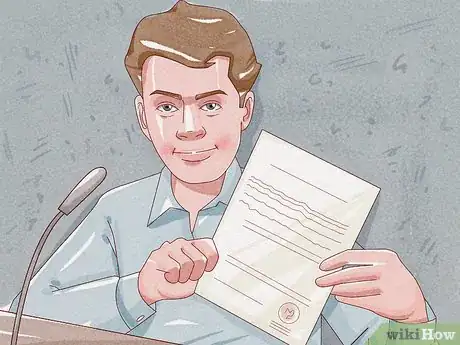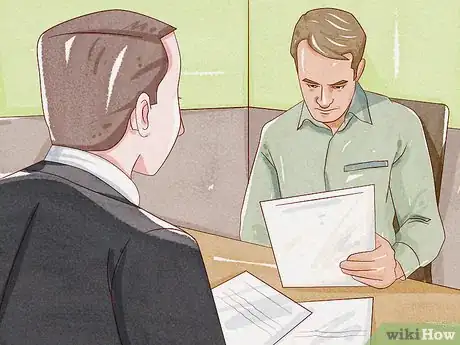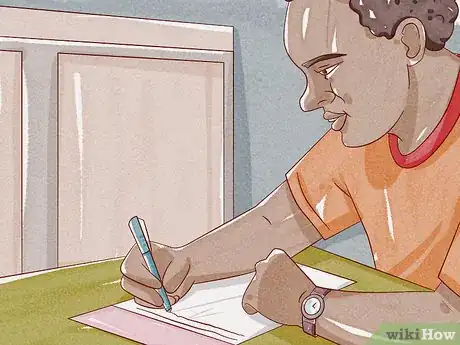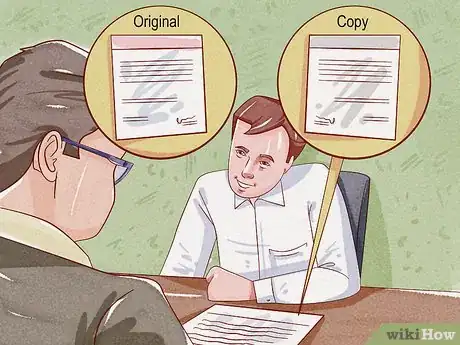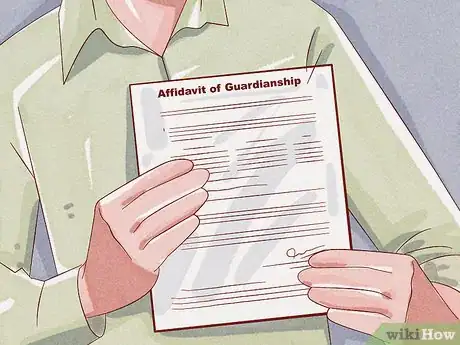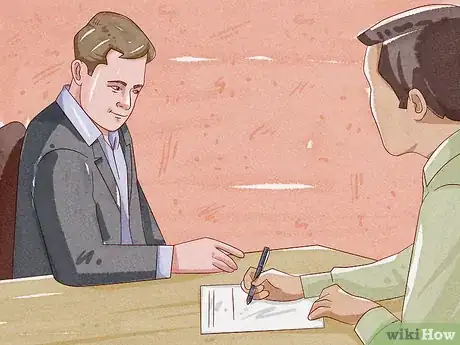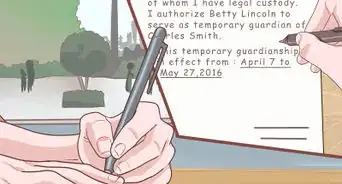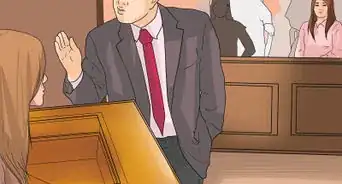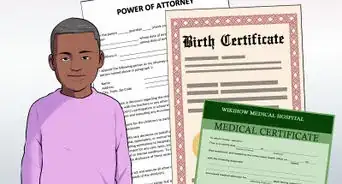This article was co-authored by Clinton M. Sandvick, JD, PhD. Clinton M. Sandvick worked as a civil litigator in California for over 7 years. He received his JD from the University of Wisconsin-Madison in 1998 and his PhD in American History from the University of Oregon in 2013.
This article has been viewed 99,570 times.
If you have guardianship of a child or adult, you will need to show the documents granting that guardianship many times. This is the only way to prove legal guardianship. This article will briefly describe the documents you may have. You only need one set of documents, but this article will discuss the most common ones.
Things You Should Know
- You can show your order or letter of guardianship signed by a judge or a will while you wait for an order appointing you as guardian.
- Power of attorney lets you act as a parent for limited activities like enrolling a child in school or getting medical care.
- An affidavit of guardianship makes you a temporary guardian, and it will clearly list the things you can and should do as a guardian.
- Be sure to only give away copies of any legal documents, as you’ll need the original documents more than once.
Steps
Proving by Judicial Decree
-
1Show your order or letter of guardianship signed by a judge. If you were appointed as guardian by a court, simply provide a copy of your order or letter of guardianship that the judge signed.[1]
-
2Show the will appointing you as guardian. A will does not provide guardianship, but it is proof of the decedent’s wishes. This should only be used during the while waiting for an actual order appointing you as guardian. Some places may not accept the will alone as proof of guardianship. If that happens, you may want to consider requesting a temporary order from the court.[2]Advertisement
-
3Provide copies of your court document. If a person or organization needs a copy of your order, provide them a copy. Do not give them your original. It is likely that you will need it more than once. Organizations that ask for copies include:
- Schools
- Daycares
- Medical Providers
- Mental Health Providers
- Banks
- Keep your guardianship status current. So long as the ward continues to need your services and the court has not released you from your appointment, you will need to maintain certain forms with the court. You can find these requirements in your state’s probate code, or sometimes in the domestic relations statutes. These requirements include:[3]
- Providing an annual accounting of how you managed the ward’s assets
- Informing the court if the ward’s needs change
- Undergoing periodic training and re-investigation of your background
Proving by Power of Attorney
-
1Show your power of attorney. In some states and circumstances, a parent or court-appointed legal guardian can grant a third person rights to act as a parent for limited activities. Be sure the power of attorney (POA) is properly executed according to the laws of your state. These laws are most likely a part of the state’s probate code. Appropriate activities to designate by POA include:
- Enrolling a child in a particular school
- Obtaining medical care for the child
- Managing the child’s financial position
-
2Provide copies of your POA. If a person or organization needs a copy of your POA, provide them a copy. Do not give them your original. It is likely that you will need it more than once. Organizations that ask for copies include:
- Schools
- Daycares
- Medical Providers
- Mental Health Providers
- Banks
-
3Inform the above organizations when the POA is terminated. If your POA is terminated, you should inform anyone who has been relying upon it that you are no longer the appropriate point of contact. This may mean that you also no longer have the right to receive any of the information regarding those issues. In general, POAs terminate by:[4]
- Death of the principal or agent
- Incapacity of the principal or agent
- Revocation by the principal
- By the terms of the POA
- The purpose of the POA has been fulfilled
Proving by Affidavit of Guardianship
-
1Show your affidavit of guardianship. If the parent(s) appointed you as guardian for a short period of time, they may have executed an affidavit of guardianship. This document should clearly spell out the effective time period and the types of things the temporary guardian may and may not do.[5]
-
2Provide copies of your affidavit. If a person or organization needs a copy of your affidavit, provide them a copy. Do not give them your original. It is likely that you will need it more than once. Organizations that ask for copies include:
- Schools
- Daycares
- Medical Providers
- Mental Health Providers
- Banks
-
3Act as a guardian. During the effective period of the affidavit, you will need to conduct yourself as the substitute parent. Unless specifically prohibited by the guardianship affidavit, you will do such tasks as:[6]
- Make immediate medical decisions for your ward
- Be responsible for accessing and providing daily care for the ward
- Be responsible for accessing any necessary educational facilities for the ward
References
- ↑ http://apps.leg.wa.gov/rcw/default.aspx?cite=13.36.050
- ↑ http://law.freeadvice.com/estate_planning/estate_planning/guardianship-provision.htm
- ↑ http://www.mncourts.gov/Help-Topics/Guardianship-and-Conservatorship.aspx
- ↑ https://www.leg.state.nv.us/NRS/NRS-162A.html#NRS162ASec270
- ↑ http://www.courts.ca.gov/1210.htm
- ↑ http://www.legalmatch.com/law-library/article/temporary-guardianship-laws.html
About This Article
In order to prove legal guardianship of a child or an adult, you’ll need to present the proper documents based on the situation. If you were appointed as guardian by a court, you can simply provide a copy of the order or the letter of guardianship that was signed by the judge as proof. If you were appointed as guardian by the parents of a child and it was executed by an affidavit of guardianship, the affidavit itself is enough proof. In some circumstances, a power of attorney, or POA, can grant guardianship for limited activities. If that’s the case, then you can present the POA as proof of legal guardianship. For tips about how to act as a guardian, keep reading!
